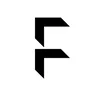À la recherche d'actions potentielles et prise en compte des projets cryptographiques de petite et moyenne taille qui n'ont pas encore émis de pièces
In recent months, the popularity of tokens with high valuations and low initial circulating supply has been a topic of discussion in the crypto community. This stems from the concern that this market structure leaves little sustainable upside for traders after the token generation event (TGE). – This is the opening sentence in the article Binance Research: Low circulation and high FDV tokens are prevalent, why has the market developed to this point? released by Binance Research this week. It seems that all of a sudden, the reasons and discussions for the prevalence of high FDV, low circulation tokens have become the headlines of the cryptocurrency media and are frequently mentioned in the hot topics of community members. On May 20, Binance announced that it will take the lead in supporting small and medium-sized cryptocurrency projects. It hopes to promote the development of the blockchain ecosystem by strengthening support for small and medium-sized cryptocurrency projects with good fundamentals, community foundation, sustainable business model and industry responsibility.
However, this article does not elaborate on the discussions and issues raised by high-valuation, low-circulation projects. Interested readers can check out related articles: When low-circulation, high-FDV tokens are rampant, rising profits may have already been privately divided up , Dragonfly Partner: Is VC coin really the culprit of this round of bull market without mutual takeovers? , Why do VCs raise the FDV of projects? Looking at investment from the perspective of meme
This article aims to list some small and medium-sized cryptocurrency projects through financing data, investment institutions, project progress, user data, etc., to find potential stocks in the current market environment. Some of them have also received investment from Binance Labs. Although Binance has previously stated that Binance Labs investment and listing review departments operate independently and do not interfere with each other, obtaining relevant investment projects may also indicate that they are more in line with Binance standards to a certain extent, so they are temporarily used as one of the reference marks in this article. This article does not contain any investment advice and is only for readers learning reference.
GoPlus security
Financing: approximately US$15 million
Project Introduction:
GoPlus is a powerful Web3 user security data platform that has developed a real-time, dynamic, and automated security detection platform, including token detection, NFT detection, malicious addresses, approval security APIs, and dApp contract security.
Team Background:
The GoPlus team has extensive experience in the field of data security. Its members mainly come from China, Turkey, the United States, Greece and other countries, and most of them have worked in Web2 security-related fields.
Project progress user data:
On April 30, GoPlus launched the user security-centric RPC service GoPlus SecNet and the on-chain personal security center GoPlus SecHub. According to official introduction, the number of monthly active independent IP users of the full-scenario security service platform SecWareX has reached 1.8 million, the number of users who pay to subscribe to advanced security services has exceeded 50,000, and the total number of chain addresses has exceeded 9 million. In addition, GoPlus has a clear plan for the Q2-Q3 stage of 2024:
1. Launch of GoPlus SecNet: The first version has covered Ethereum and BNB chains, allowing SecWareX users to access and experience real-time on-chain risk control on a large scale.
2. SecHub launch: The personal security center module is launched to provide users with various security risk preference settings and allow personalized configuration of their security policies.
3. SecWare protocol openness: aims to build a GoPlus network developer ecosystem, allowing more services to serve users through SecWareX
4. Security gas service model: Introduce project tokens $GPS and energy blocks as gas for security services, thereby realizing the circulation of the economic system.

CoucheZéro
Financing of approximately US$260 million
Project Introduction:
LayerZero is a trustless cross-chain communication protocol. Its essence is to use the technical principle of light nodes and design an ultra-light node mechanism, which splits the trust link in the middle into two parts through relayers and oracles, thereby exchanging lower costs for better security.
Financement :
LayerZero has completed three rounds of financing with a total financing amount of over US$250 million. It has a luxurious investment lineup, including Andreessen Horowitz, Binance Labs, Sequoia Capital, Samsung Next, Coinbase Ventures, Multicoin Capital, etc.
On September 16, 2021, LayerZero completed a $6 million Series A financing round with a valuation of $50 million, led by Multicoin Capital and Binance Labs.
On March 30, 2022, LayerZero completed an additional $135 million in Series A financing at a valuation of $1 billion, led by Andreessen Horowitz.
On April 4, 2023, LayerZero completed a $120 million Series B financing round at a valuation of $3 billion, led by Andreessen Horowitz.
Team Background:
Caleb Banister is the co-founder of LayerZero Labs. He graduated from the University of New Hampshire in 2010 and was the co-founder of 80 Trill (a crypto company that specializes in writing and auditing smart contracts for blockchain-related projects) and Minimal AI (an ML/AI company).
Bryan Pellegrino is the co-founder and CEO of LayerZero Labs. Prior to founding LayerZero, Pellegrino was a professional poker player, successfully sold a machine learning tool he wrote to an MLB (Major League Baseball) team, and published journal reports in the field of artificial intelligence.
Ryan Zarick is the co-founder and CTO of LayerZero Labs. He was the co-founder of 80 Trill and Minimal AI and joined the Layerzero team in 2021.
Project Progress:
LayerZeros announcement indicates that it may issue tokens in June. On May 11, the token distribution information was announced, with 50% allocated to users of cross-chain OFT, 20% to LPs, 15% to token holders, and 15% to community members. At the same time, the LayerZero Foundation will screen according to the final Sybil Report, and Sybil addresses will be automatically disqualified from the distribution.
User data:
In May, LayerZero co-founder stated that the actual number of users exceeded 6 million, and stated in the community that it is estimated that 6.67%-13.33% of the 6 million addresses are eligible for airdrops.

Financement Puffer
Financing: approximately US$24.15 million
Project Introduction:
Puffer is a permissionless native liquidity re-staking protocol built on EigenLayer, which reduces the threshold for starting a staking validator from 32 ETH to less than 2 ETH, and has received funding from the Ethereum Foundation. Puffer aims to serve three main groups: node operators (NoOps), re-staking operators (ReOps), and ETH stakers, of which ReOps are mainly responsible for AVSs operations and may also be NoOps. Nodes in the protocol use Puffers anti-slashing technology to participate in node verification and run AVSs at a cost as low as 2 ETH, and can simultaneously accumulate PoS rewards and obtain re-staking rewards through AVSs operations.
Financement :
In June 2022, Puffer Finance received a pre-seed round investment of US$650,000, led by Jump Crypto, with participation from Arcanum Capital and IoTeX.
In August 2023, Puffer Finance announced the completion of a $5.5 million seed round of financing, led by Lemniscap and Lightspeed Faction.
In January 2024, Binance Labs made a strategic investment in Puffer, and the specific investment amount was not disclosed.
On April 16, 2024, the Ethereum re-staking protocol Puffer completed an $18 million Series A financing round, led by Brevan Howard Digital and Electric Capital, with participation from Coinbase Ventures, Kraken Ventures, Lemniscap, Franklin Templeton and other investment institutions.
Team Background:
The Puffer Finance team has five core members who are proficient in Python, C language, Java, SolidWorks, JavaScript, blockchain, etc. Their professional backgrounds include computer science, electrical engineering, marketing, etc.
Amir Forouzani is the co-founder and CEO of Puffer. A graduate of USC, he has a background in data science and NASA. He holds a Masters degree in Electrical and Electronic Engineering from USC and has worked as a research assistant.
Jason Vranek is the co-founder and CTO of Puffer. He holds a masters degree in computer science and engineering and has experience in market design and blockchain front-end transactions. He uses Chisel to build hardware accelerators and is interested in teaching and automatic theorem provers, deep reinforcement learning, and is currently pursuing a doctorate in verifiable computing.
Project Progress:
As of April 16, 2024, according to the official website of Puffer Finance, the total TVL of the protocol reached US$1.179 billion, and it has generated 20.02 billion Puffer points, 550 million Eigenlayer points, and a comprehensive APY of over 3.3%.
On May 9, 2024, the Puffer Finance mainnet was launched, marking the entry of the mission into Chapter 4. Users can now deposit ETH, stETH or wstETH, and detailed Chapter 4 missions will be launched soon, which will soon bring an improved points system.
On May 15, 2024, Puffer Protocol revealed in an AMA event that it will launch a new Chapter 4 event. The new Puffer points mechanism will further enhance the benefits of pufETH holders, and will soon cooperate with Trust Wallet, Scroll and its ecological project Pencils Protocol to jointly carry out multiple incentive activities for Puffer users. In the future, Puffer plans to launch its own AVS to continue to provide higher sustainable rewards to its stakers and node operators through re-staking and verification services.
Puffers mechanism includes two tokens, the liquidity pledge token pufETH and the governance token PUFI. Users who pledge ETH on Puffer can obtain the liquidity pledge token pufETH. PUFI will be used for voting and governance in Puffer DAO. The specific token economic model has not yet been disclosed.
User data:
Puffer, as a node operator ranked in the top 10 on the EigenLayer official website, has only registered EigenDAs AVS. As of May 20, 2024, the number of pledgers is 8,690, and the entrusted assets include approximately 1.786 million EIGEN and 3,372 ETH, with ETH mainly coming from Lido and Swell.
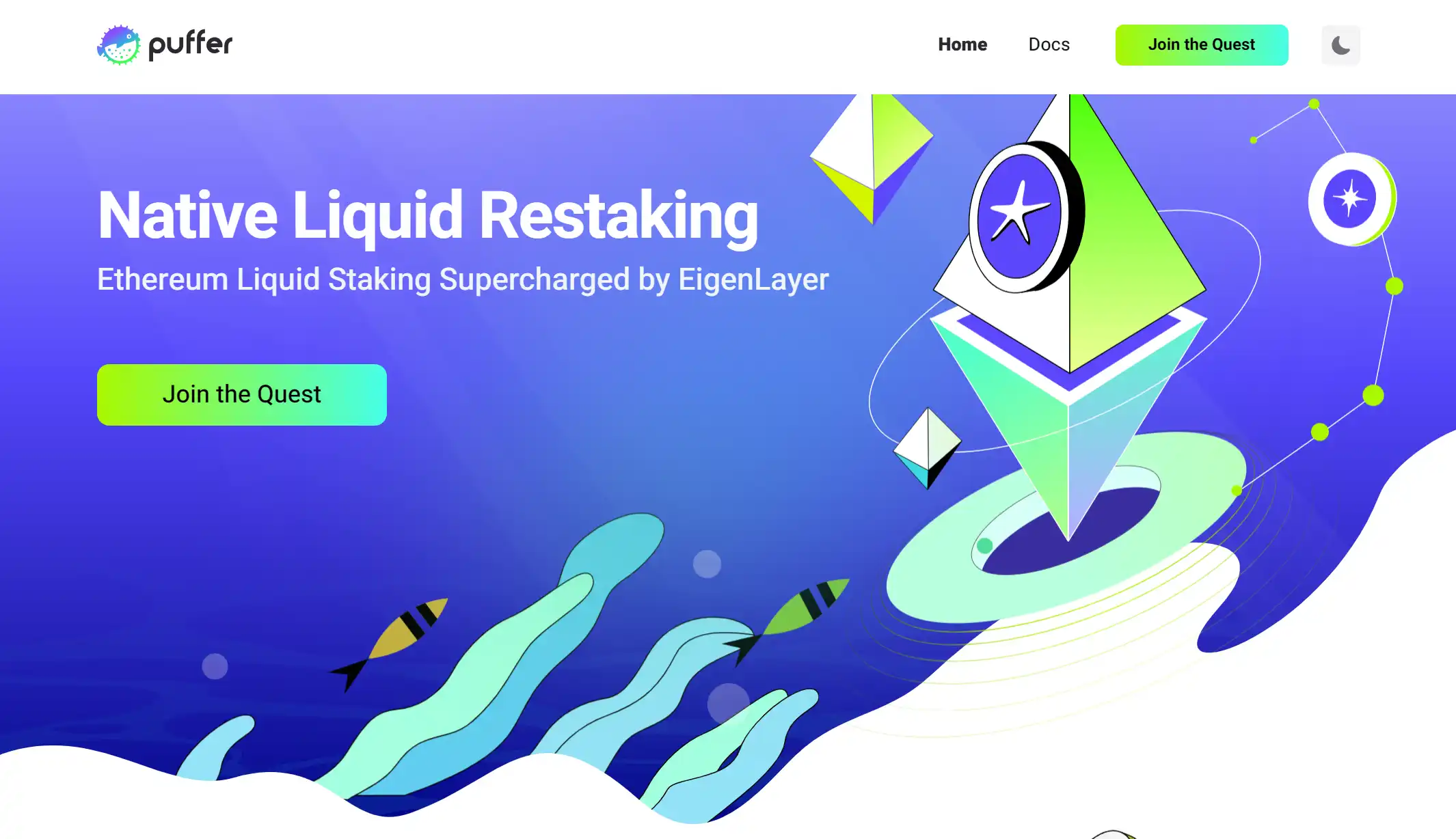
Ma coquille
Financing: approximately US$16.6 million
Project Introduction:
MyShell is a fair and open source AI ecosystem, covering a large number of open source and closed source AI models. It is an AI agent/APP creation platform where creators can build applications and easily capture users. Its ecosystem includes robots such as OpenVoice (an instant voice cloning program); MeloTTS, a multilingual text-to-speech (TTS) library; Alice is an artificial intelligence agent that can perform various tasks, including topic research, coding, and literature review.
Financement :
MyShell received US$5.6 million in seed round financing on October 16, 2023, and US$11 million in Series A financing led by Dragonfly on March 27 of the same year, with participation from investment institutions such as Delphi Digital, Bankless Ventures, Nascent, Foresight Ventures, OKX Ventures, GSR, Maven 11, Nomad Capital, and Animoca Brands.
Team Background:
Myshell co-founders Rick and Ethan have been deeply involved in the field of AI for more than 10 years. Most of the research team comes from top universities such as MIT, Princeton University, and Oxford University. Rick is one of the co-founders of Myshell and has extensive entrepreneurial and management experience in the fields of AI and robotics. Rick is mainly responsible for product design and team management at Myshell. Ethan Sun is another co-founder of Myshell and has extensive entrepreneurial and RD experience. He is mainly responsible for technical architecture design and core algorithm innovation at Myshell. He has invested a lot of energy in the research and development of TTS speech synthesis technology to achieve high-quality synthesis of personalized speech. Ethan Sun is an expert in AI and speech technology. Myshells technical advantages are largely due to his contributions.
Project progress user data:
Myshell is the sixth AI project incubated by Binance Labs. On April 19, MyShell launched the worlds first AI consumer Layer 2 network, which is technically supported by EigenDA and Optimism, and has reached a cooperation with AltLayer. As of mid-April, more than 50,000 creators have built innovative AI applications on MyShell, and more than 1.2 million users are using Myshell.
On April 29, MyShell launched the first phase of the testnet, with security deployment provided by AltLayer. The project will also release NFT MySoul at the end of May, with a total supply of 3,333, of which 65% will be allocated to testnet users, 10% to the community, 15% to Myshell Treasury, and 10% to the NFT launchpad and community collaboration.
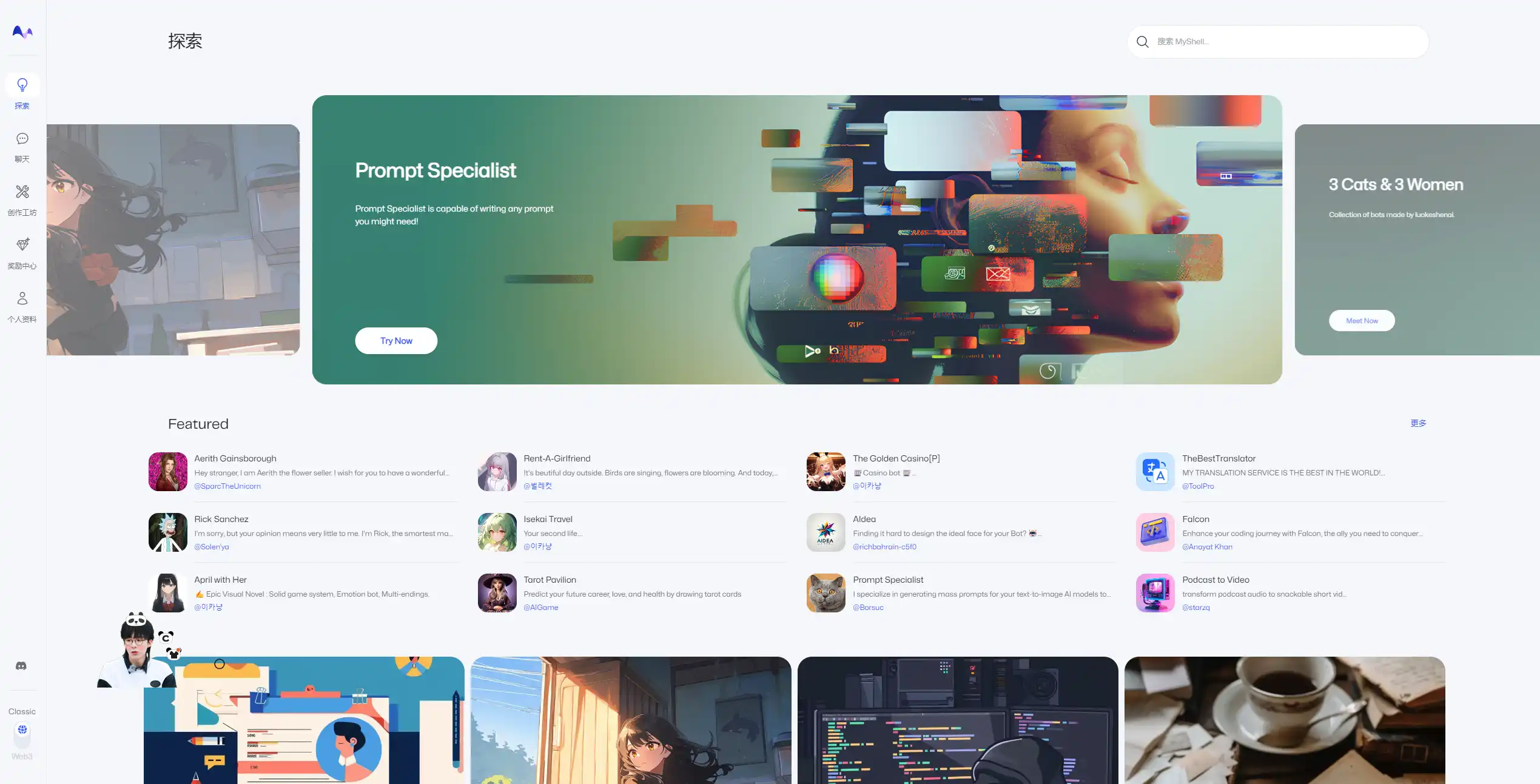
Ultiverse Electric Sheep
Financing: approximately US$13.5 million
Project Introduction:
Ultiverse is an AI-driven one-stop platform for Web3 game production and publishing. Based on the Bodhi protocol, Ultiverse connects different game worlds in a generative AI way.
Financement :
Ultiverse has completed three rounds of financing in total. The investment lineup is luxurious, including BinanceLabs, Sequoia Capital, IDG Capital, Animoca Brands, etc. On March 18, 2022, it completed a $4.5 million seed round of financing with a valuation of $50 million. On March 25, 2022, Binance Labs invested an additional $5 million in Ultiverse, and the investment will be made in the form of an equity acquisition. On February 14, 2024, Ultiverse completed a $4 million strategic round of financing with a valuation of $150 million, led by IDG Capital.
Team Background:
The team consists of more than 100 full-time game developers and artists. The team members previous work experience includes Gameloft, Blizzard, Ubisoft, Tencent, etc. The team has developed popular games such as Prince of Persia and Assassins Creed series and Elden Ring.
Project Progress:
On January 3, 2024, Ultiverse released the token economics, and 8% of the tokens will be airdropped to Electric Sheep NFT, SOUL holders, and ecosystem asset holders. The specific distribution of the remaining ULTC is as follows: 30% of the tokens will be used in the Ultiverse ecosystem; 20% of the tokens will be allocated to investors; 17% of the tokens will be allocated to the team; 15% of the tokens will be allocated to the community; 7% of the tokens will be used for initial exchange liquidity.
The Ultiverse Gold Chip NFT was released on April 29th. According to Blur data, as of press time, the floor price of the NFT is 0.33 ETH.
User data:
Currently, according to official introduction, Ultiverse supports more than 300 game integrations, with more than 7 million active community users, including more than 1 million Web3 game enthusiasts, and about 10,000 content creators on the platform.
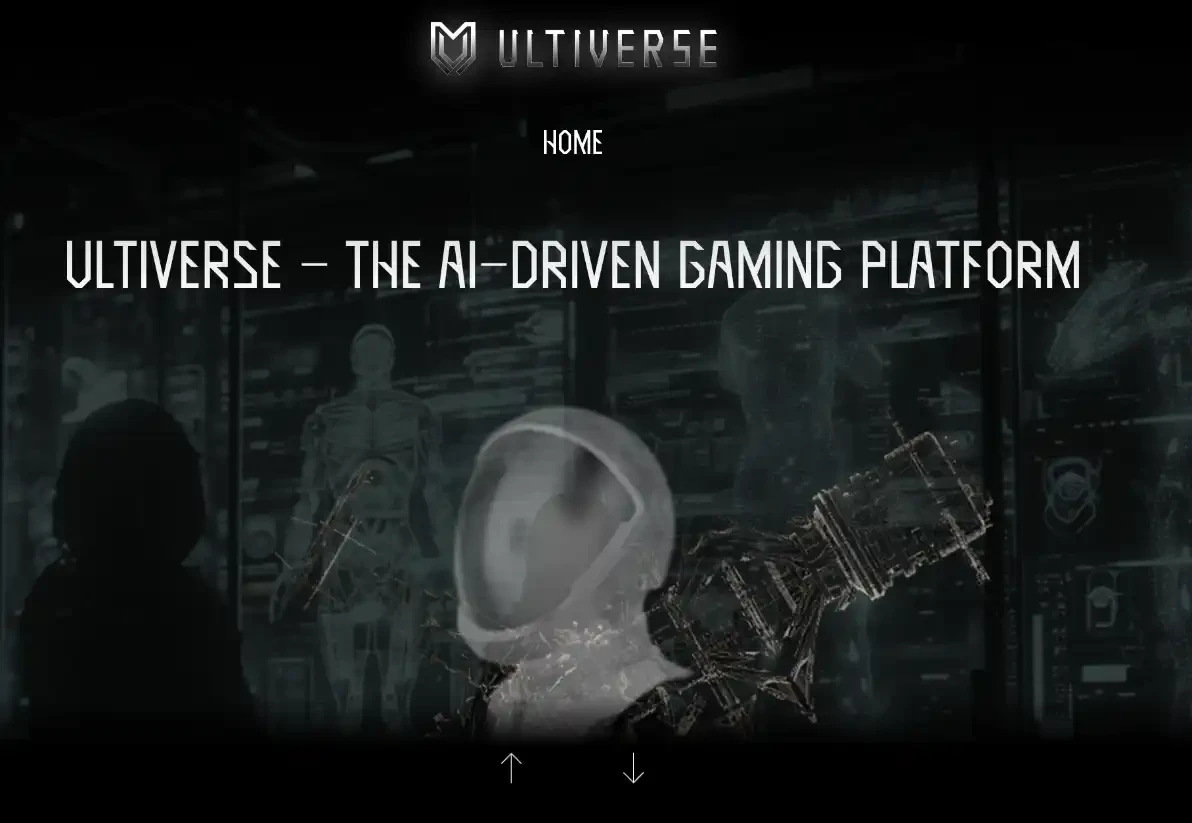
Thruster
Financing: approximately US$7.5 million
Project Introduction:
Thruster is the native DEX of the Blast ecosystem. For developers, Thruster provides a fair launch mechanism and liquidity tools. For users, Thruster supports revenue tools as well as social and analytical features, making trading and liquidity provision easier. Thruster has confirmed that many Blast native projects want to use Thruster infrastructure and community to guide their tokens.
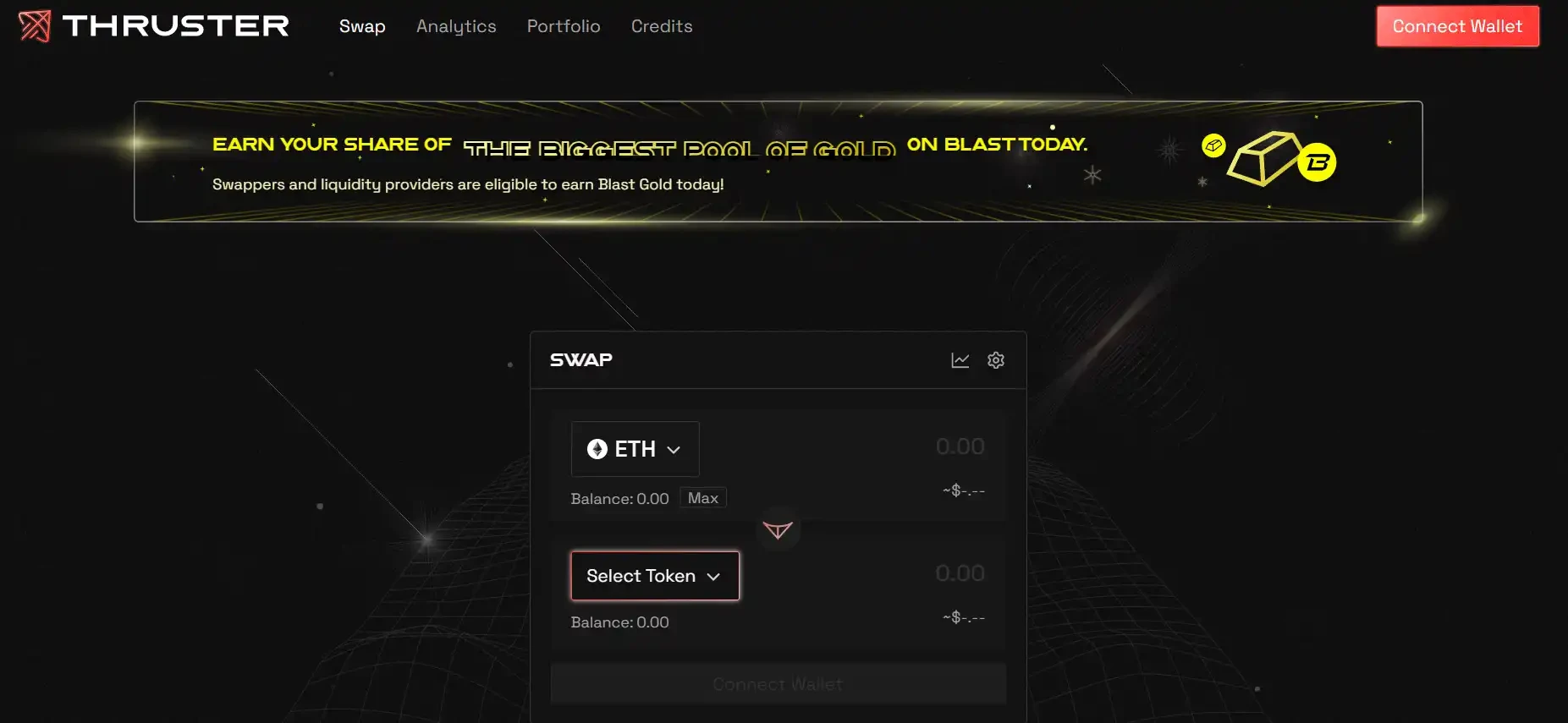
team introduction:
The team is anonymous and no relevant information is available at the moment.
Financement :
On April 18, Thruster completed a $7.5 million seed round of financing with a valuation of $70 million, led by Pantera Capital, with participation from OKX Ventures, Mirana Ventures, ParaFi Capital, Manifold Ventures and Arche Fund (formerly Coin 98 Ventures).
Project progress user data:
On May 1, the Thruster Credit Dashboard was launched, which tracks loyalty data such as liquidity, swaps, and social contributions. On May 10, Thruster decided to give 2.7 million Blast gold points to loyal users of the platform, and distribute them in stages, mainly to platform liquidity providers. As of May 16, more than 2 million points have been distributed.
Official data shows that Thruster has been used by more than 100,000 independent wallets, with funds deposited close to $300 million. On May 22, Thruster posted on the X platform that Thrusters TVL exceeded $500 million for the first time.
Analog
Financing: approximately US$16 million
Project Introduction:
Analog is a blockchain interoperability project that is building cross-chain communication tools for interoperability across multiple blockchain networks. Its core products include Timechain, a Rust-based blockchain network; Analog Watch, a product for developers; and the Timegraph SDK and API suite, which allows application builders to combine applications on multiple chains. Analog has also launched a novel and fast PoT protocol that creates verifiable event data on the time chain, allowing DApp developers to build the next generation of event-based applications.
Financement :
In March 2024, Analog announced the completion of a $16 million seed and strategic round of financing to improve its cross-network communication tools for developers. Tribe Capital led the investment, and NGC Ventures, Wintermute, GSR, NEAR, Orange DAO, Mike Novogratzs alternative asset management company Samara Asset Group, Balaji Srinivasan and others participated in the investment. The financing was achieved through a simple agreement for future tokens (SAFT), and this round of financing increased Analogs fully diluted valuation to $120 million.
team introduction:
Victor Young is the founder of Analog and a partner of X Fund, with many years of experience in blockchain development. Eric Wang is the teams business leader, and has worked at Injective Labs and Polkadots ecosystem development organization. Avneet Singh is the teams product leader, and has worked as a product manager at Chainlink; another product manager, Sanchal Ranjan, was once an entrepreneur supported by the well-known venture capital firm Y Combinator. Some members of Analogs team have worked at Parity Technologies, the Polkadot ecosystem development organization.
Project Progress:
At present, the official has confirmed that those who participate in the testnet can receive airdrops. According to the token economy announced by it, 26% of the total token supply will be used for airdrops. In 2024, amid the wave of coin issuance by many full-chain interoperability protocols, Analog, which has received investment from a star lineup, is also worth paying attention to. On May 9, Analog announced that the second phase of the testnet would be open to community members. The Analog Discord community has more than 110,000 members, and the community is very popular.
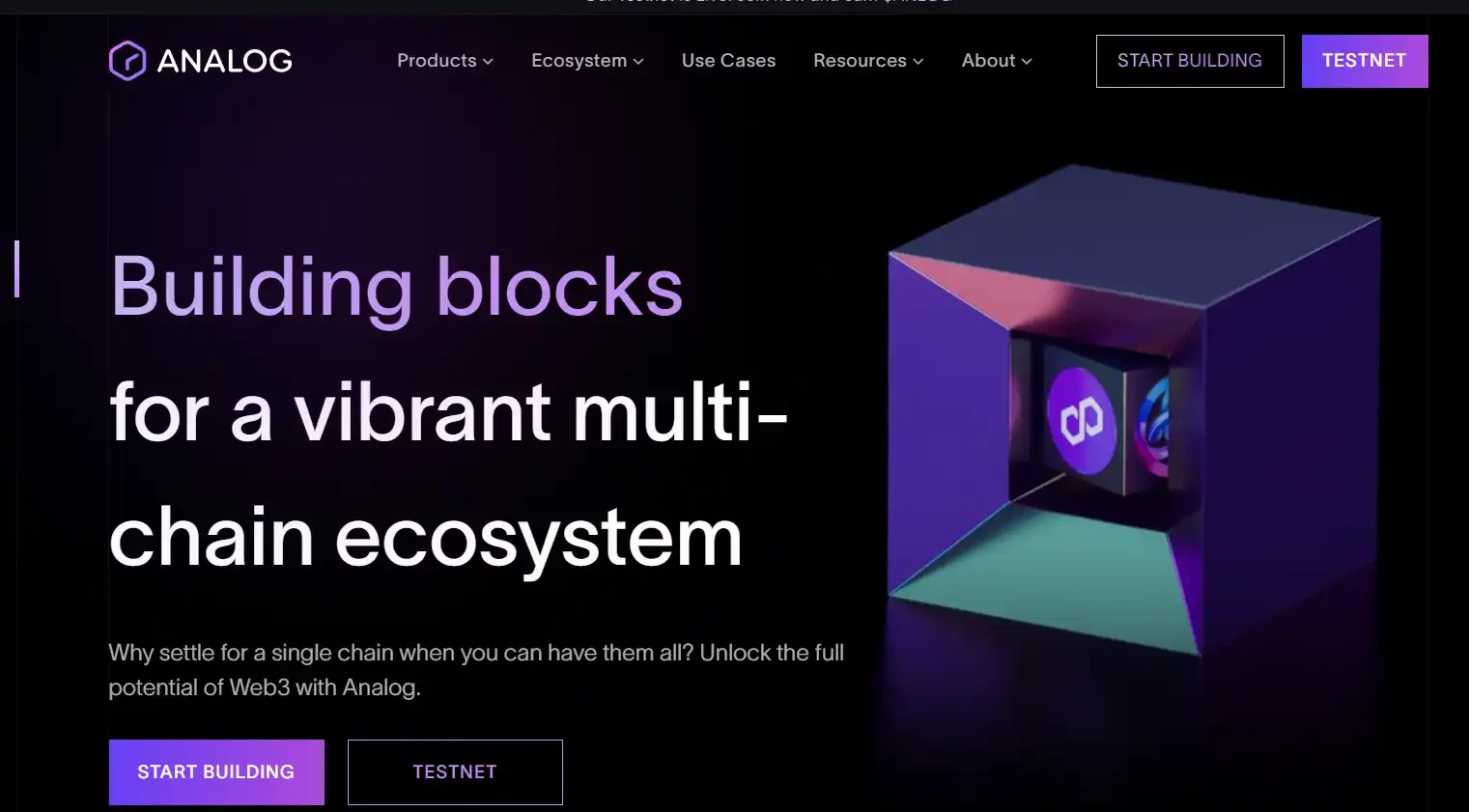
NGRAVE
Financing: approximately US$21 million
Project Introduction:
NGRAVE is a hardware wallet manufacturer that provides complete self-custody solutions, including the connectionless and highest security certified (EAL 7) hardware wallet ZERO, the mobile application LIQUID that connects users to the blockchain in real time, and the encrypted and recoverable key backup GRAPHENE. In 2022, NGRAVE raised a total of US$21 million, with participating investors including Binance Labs, Woodstock Fund, Morningstar Ventures, DFG, Spark Digital Capital, Moonrock Capital, Mapleblock Capital, etc.
Team Background:
NGRAVE was founded in Belgium in 2018 by a founding team consisting of Ruben Merre, Xavier Hendrickx and Edouard Vanham. Ruben Merre is the CEO and a serial entrepreneur. Xavier Hendrickx is the CTO and a self-taught computer scientist. Edouard Vanham is the COO and a former banker and entrepreneur.
User data:
As of December 2022, Ngraves flagship product Zero has been sold in 90 countries and regions, with cumulative sales of US$2.2 million. Recent data has not yet been disclosed.
Since NGRAVE is a hardware wallet product, it is highly likely that no tokens will be issued, so we will only provide an introduction for the convenience of readers.

This article is sourced from the internet: Looking for potential stocks and taking stock of small and medium-sized crypto projects that have not yet issued coins
En bref Le prix de Render est sur le point de perdre le support à $10 et pourrait connaître une baisse à $8. La participation des investisseurs a connu une baisse massive de 55% en l'espace de cinq jours. Parmi les investisseurs toujours actifs sur la chaîne, environ 25% sont en bénéfice, ce qui indique que la prise de bénéfices est toujours probable. Le prix de Render est en baisse depuis deux semaines après avoir atteint un sommet historique en mars. Mais il semble que ce sentiment parmi les investisseurs se soit dissipé. Avec une activité en baisse, RNDR pourrait-il être sur le point de perdre un soutien psychologique crucial ? Les investisseurs de Render reculent Le prix de Render connaît une accumulation de signaux baissiers non seulement en raison des signaux plus larges du marché, mais aussi en raison de ses propres investisseurs. Les adresses actives, qui représentent les investisseurs participant à la…







